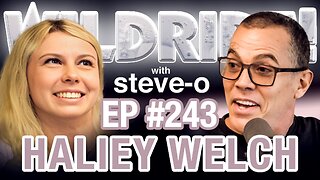Premium Only Content

Inorganic and Organic Hg Damage Proteins | Stephen LaVoie, PhD (proxy) for Anne Summers, PhD
Inorganic and Organic Hg Damage Proteins Differently and Cells Respond Differently as they Recover from these Two Toxicants | Stephen LaVoie, PhD (proxy) for Anne Summers, PhD
IAOMT Annual Conference in Las Vegas, NV
September 9, 2017
Learning Objectives:
1. Basic metallobiology – Life depends on good metals which makes it vulnerable to bad metals
2. What protein structures are most at risk for damage by inorganic or organic Hg compounds
3. What defenses the cell calls upon to recover from sub-acute Hg exposure and how these differ for inorganic and organic Hg compounds
4. Which of these proteins and pathways are most relevant to human cell biology
Dr. Anne Summers, a microbial chemist at the University of Georgia, applies genetics, inorganic biochemistry, biophysics, and computational biology to understand how proteins and metabolic pathways in a model microbe are vulnerable to Hg exposure and what natural defenses the cell can mount to recover from such exposure. She also studies bacterial plasmid-encoded resistance to inorganic and organic mercury compounds (the mer locus) as a model for (a) gene regulation by toxic metals, (b) microbial detoxification of environmental hazards, and (c) the influence of toxic metals on the commensal microbiota of vertebrates.
Disclaimer: The information provided on this video is not intended as medical advice and should not be interpreted as such. If you seek medical advice, please consult with a health care professional. Also, the information in this video represents the thoughts of the individual speaker/s, and the views expressed in this interview do not necessarily reflect the views of the IAOMT, its individual members, its Executive Committee, its Scientific Advisory Council, its administration, its employees, contractors, sponsors, or any other IAOMT affiliates.
-
 49:43
49:43
International Academy of Oral Medicine & Toxicology
1 year agoNorman Shealey, Break Out 1
219 -
 1:22:44
1:22:44
Michael Franzese
1 day agoWill Trump’s Win Finally Convince Democrats to Stop The Woke Nonsense??
141K110 -
 8:27:07
8:27:07
MDGgamin
12 hours ago🔴LIVE- Rumble Gaming To The MOON - Variety of Games & Chatting - #RumbleTakeover
110K4 -
 27:24
27:24
Mr. Build It
5 days agoDECK DISASTER! How We Fixed a Botched Build
88.5K14 -
 26:58
26:58
barstoolsports
13 hours agoZach Bryan Blocks All of Barstool | Stool Scenes
104K8 -
 1:06:44
1:06:44
Talk Nerdy 2 Us
1 day ago🔥 Hackers vs. The World: From Amazon breaches to FBI-confirmed Chinese telecom spying
98K22 -
 1:24:20
1:24:20
Vigilant News Network
1 day agoJoe Rogan Drops Shocking Election Claim | The Daily Dose
159K164 -
 1:10:18
1:10:18
FamilyFriendlyGaming
1 day ago $18.59 earnedCat Quest III Episode 2
133K -
 20:07
20:07
DeVory Darkins
1 day ago $4.35 earned"They Talking About Finance!" The View FRUSTRATED by NYC Mayor TRUTH BOMB
100K104 -
 1:20:18
1:20:18
Steve-O's Wild Ride! Podcast
2 days ago $2.29 earnedThe Hawk Tuah Girl Is Really Becoming Successful! - Wild Ride #243
75.9K6